
“He’s bullying me!” As educators, this is something that we hear all.of.the.time, but how often is the behavior actually bullying? This word is thrown around so casually, and so frequently, that one-time, mean choices are often labeled as “bullying.” My fear here is that real bullying behaviors may go unnoticed or undetected, while educators and parents overwhelm themselves with small, no-big-deal issues that children can solve themselves. This can have very serious, even life-threatening, consequences for our youth.
Bullying is defined as “unwanted aggressive behavior, observed or perceived power imbalance, and repetition or high likelihood of repetition of bullying behaviors” (www.stopbullying.gov). Below you’ll find a more kid-friendly definition of bullying that I use in my lessons with students:
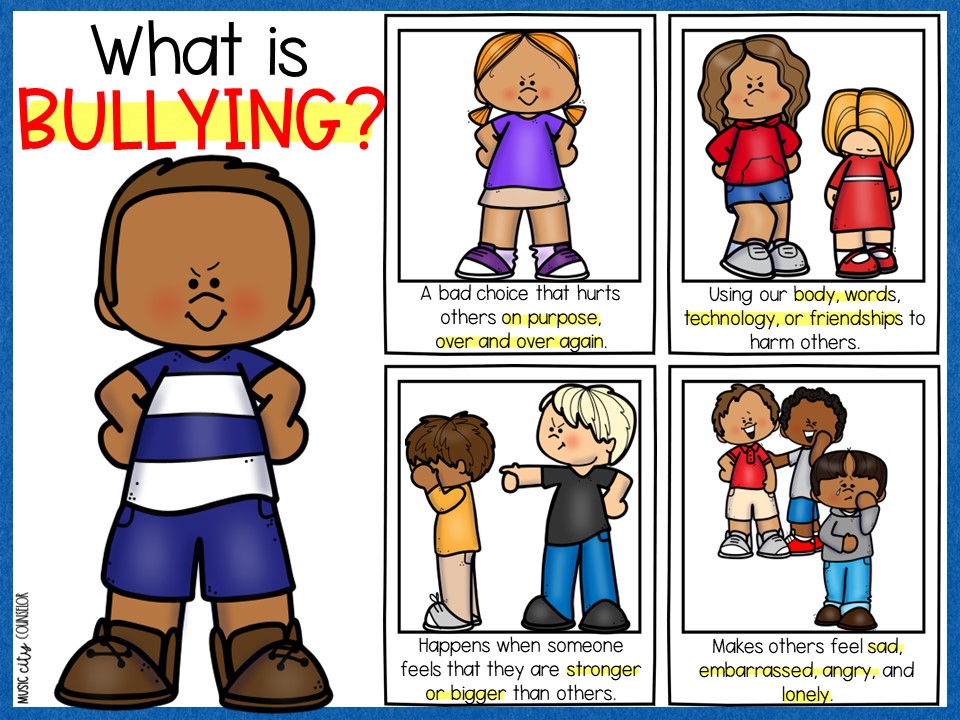
The most current research finds that 20% of school-aged children are victimized by bullying. We also know that bullying behaviors most often take place in areas without adequate adult supervision, such as the classroom, hallways, bathrooms, school bus, playground, and online. In elementary schools, the most common bullying behaviors are name-calling, threatening to harm, exclusion, spreading rumors, and physical violence.
Bullying takes a physical, social, academic, and emotional toll on those who are victimized by bullying, those who engage in bullying behaviors, and those who witness bullying. Bullying is linked to many serious mental health outcomes such as depression, anxiety, changes in sleeping and eating, decreased academic performance, loss of interest in hobbies, substance abuse, risky behaviors, and even suicide.
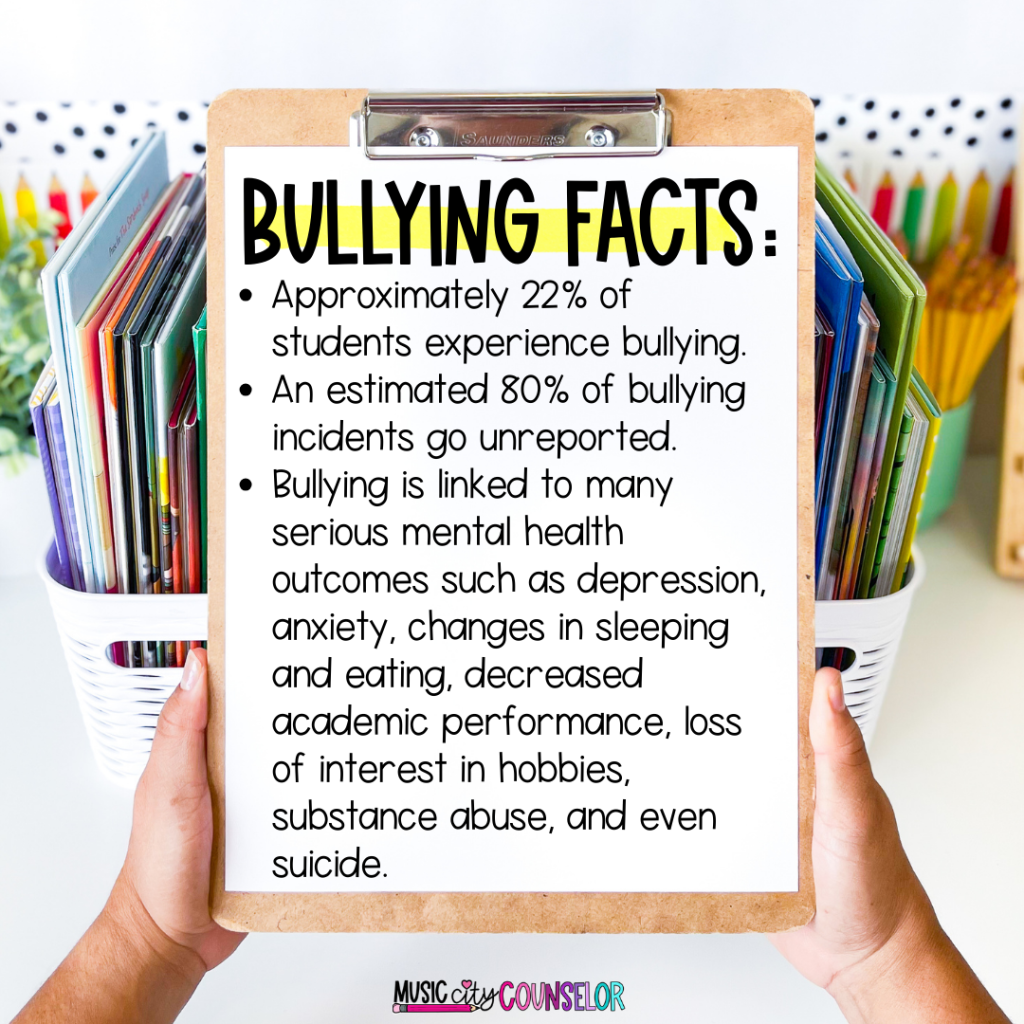
In these post-pandemic times, with the increased use of technology in both schools and homes, cyber-bullying is quickly becoming the most common type of bullying. Cyber-bullying is particularly damaging because it is “persistent, permanent, and hard to notice” (www.stopbullying.gov). Constant access to devices can cause victims of cyber-bullying to feel there is no escape, or relief, from the shame, embarrassment, and harassment they’re experiencing. And, unfortunately, cyber-bullying is very easy to hide, even when educators and parents make an effort to monitor and supervise children’s use of devices.
Story Books for Bullying Prevention
With these staggering statistics in mind, school counselors have a responsibility to teach students how to identify true bullying behaviors, and stand up for both themselves and their peers.
If you know me, you know that I love to use story books to grab students’ attention, spark meaningful conversation, and address tough topics in a relatable, age-appropriate way. Here are my favorite story books for bullying prevention programming. Read on for reviews of each story!
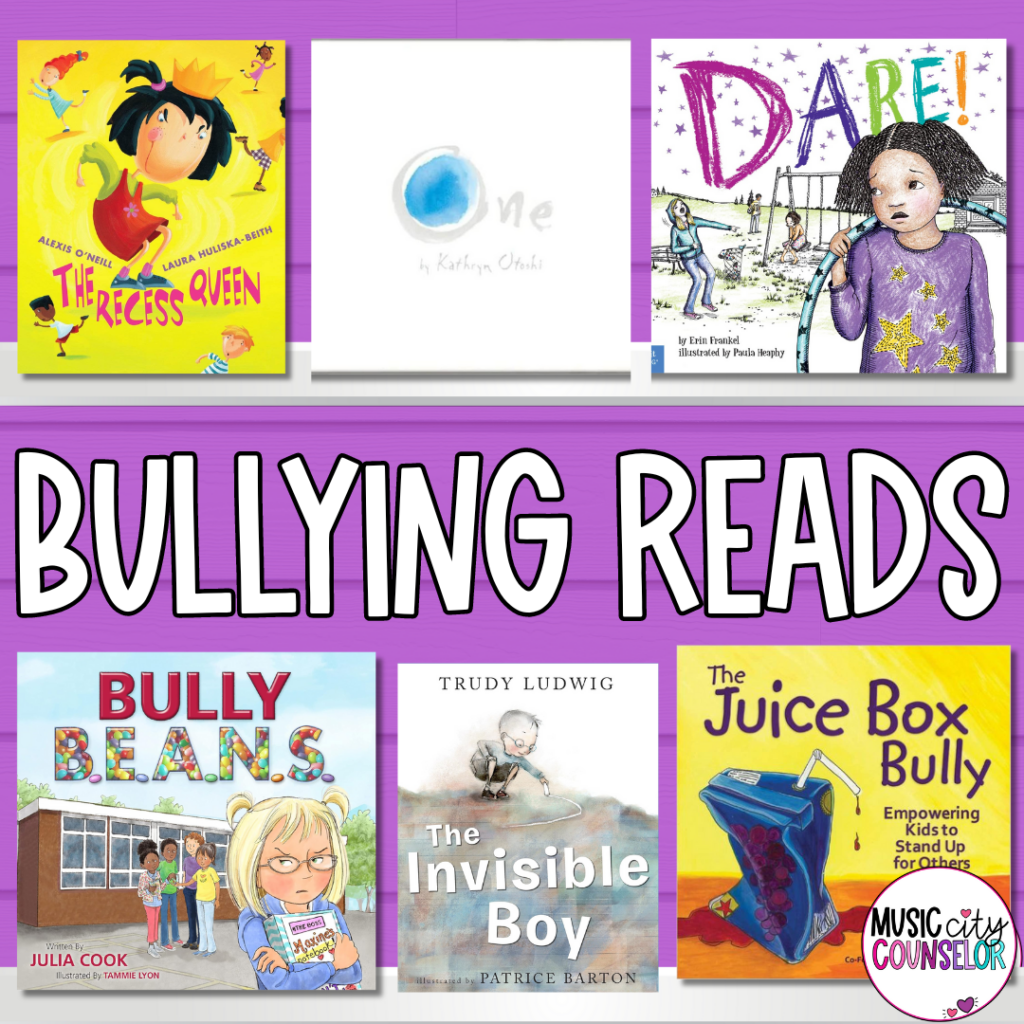
“The Recess Queen” by Alexis O’Neill
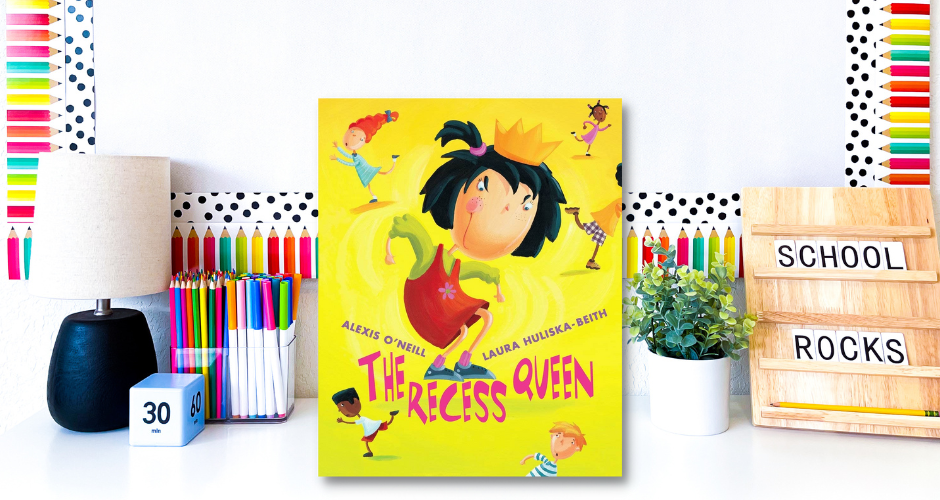
I’ve read “The Recess Queen” by Alexis O’Neill aloud so many times (and it’s so adorably catchy) that I literally have it memorized (Amazon Affiliate Link).
It tells the story of a little girl named Jean, who rightfully earned the title of the “Recess Queen.” She is the bossy ruler of the playground who always gets to be first and gives anyone a piece of her mind who tries to stand in her way. Until one day, when a new friend named Katie Sue comes to school. She was a small, quiet child – until it was time for recess. Katie Sue was the first friend brave enough to stand up to Jean! And not only did she stand up to the Recess Queen, she even asked her to play!
Katie Sue changed Jean’s heart that day, and from then on, the playground became a much happier place to be.
I love how our unlikely hero little Katie Sue was able to singlehandedly inspire change in her peers. She realized that, just like everyone else, Jean just wanted to be included, and her small act of kindness changed the whole dynamic of their playground!
To reinforce these concepts with your students, I recommend using my companion lesson!
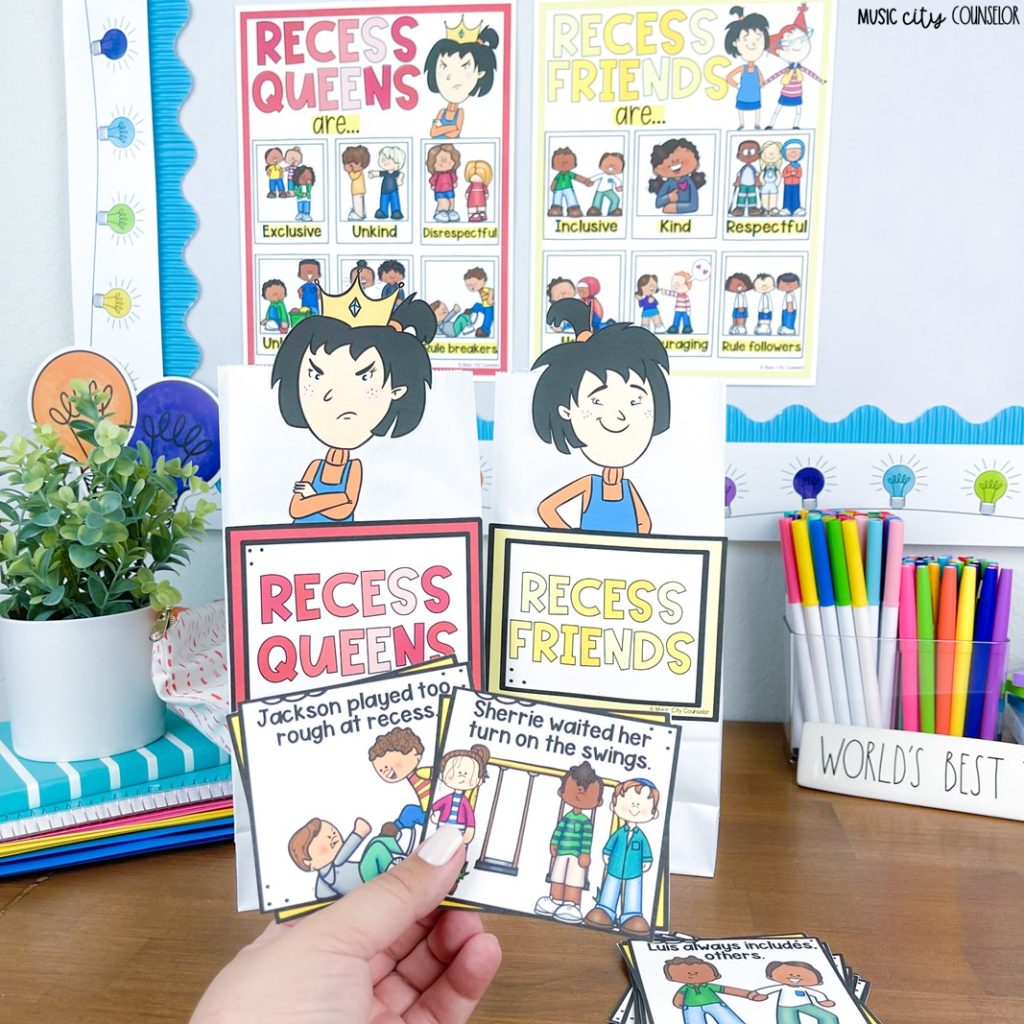
“One” by Kathryn Otoshi

The story “One” by Kathryn Otoshi (Amazon affiliate link) is one of the most powerful and memorable books I have found for bullying prevention lessons. “One” tells the story of Blue. Blue likes who he is, except when he is around Red. Red picks on Blue, calls him names, and makes him feel like he just isn’t good enough. The other colors don’t like what they see, and comfort Blue – as long as Red isn’t around. But, their silence in front of Red gives Red even more power.
Thankfully, everything changes when a hero named One arrives. He teaches all of the colors how to “count” and be “the one” to stop bullying. One even chooses to include and be kind to Red because he believes that each and every one of us have value.
This story hooks students’ attention and teaches them a powerful lesson: it only takes one voice to ignite change and stand up to bullying.
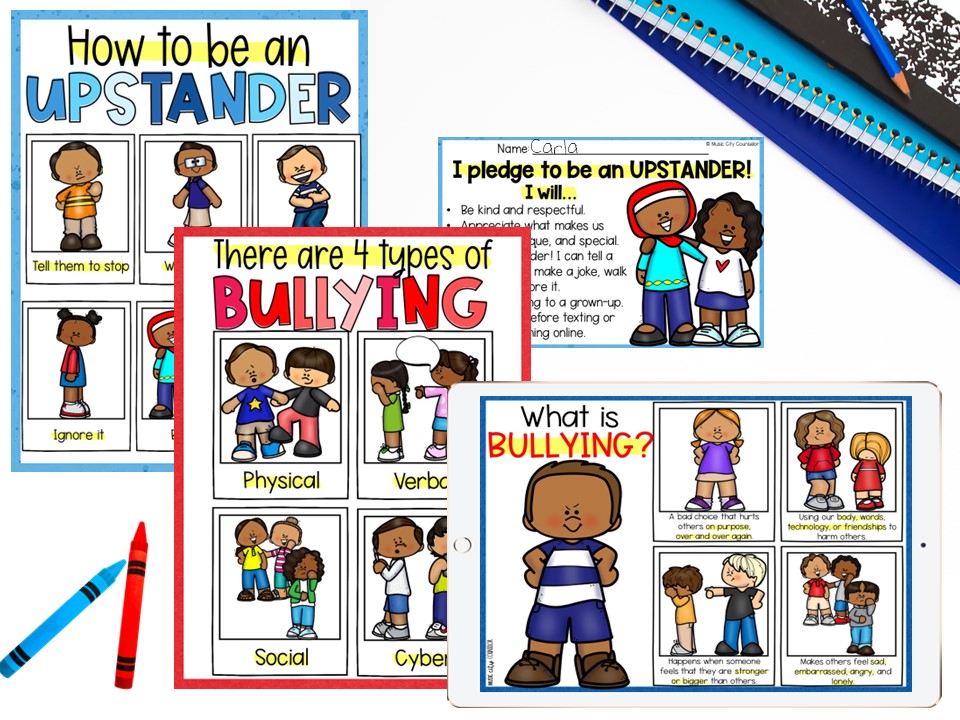
I love to use my companion lesson to this story to teach students about the four types of bullying (physical, verbal, social, cyber), the places where bullying behaviors are most likely to happen, how to be an upstander, and how to report bullying to a safe and trusted grown-up. The lesson offers everything you need, including a thorough presentation, posters, a printable craft, an upstanders pledge, coloring pages, and worksheets!
“Weird!” “Dare” & “Tough” by Erin Frankel
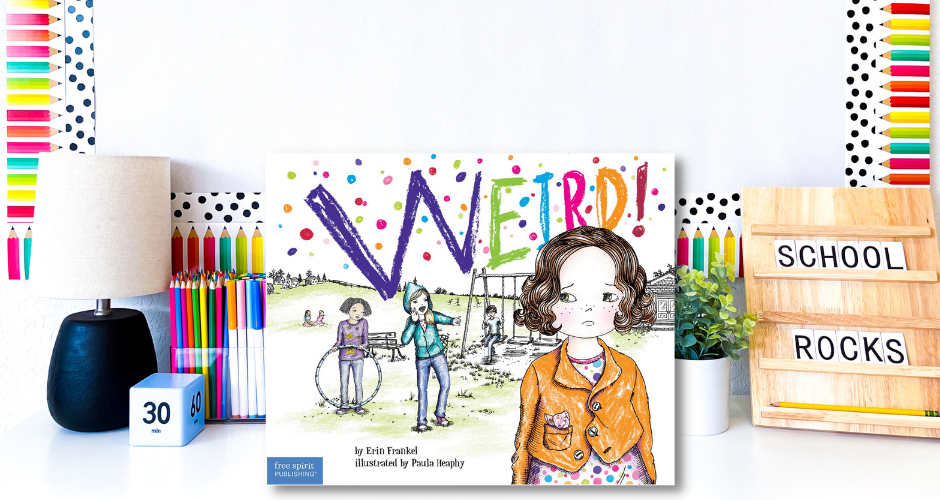
The bullying prevention series “Weird!” “Dare!” and “Tough!” (Amazon Affiliate Links) by Erin Frankel is my absolute favorite to read aloud in upper elementary classrooms. I read these books in order in a 3-part lesson series. The books follow the same characters and the same bullying story line, but are each told from a different child’s perspective. “Weird!” is told from the perspective of Luisa the victim, “Dare!” is told from the perspective of Jayla the bystander, and “Tough!” is told from the perspective of Sam the bully.
Students love the continuity this series offers as they get to know (and relate so well to) the characters. With each read, students develop empathy, compassion, and understanding for the choices each character makes, and the struggles they experience. The comic-book-style illustrations really hook their attention, and give an “older,” more mature feel to the series. As the series goes on, each character learns how to stand up for themselves, to stand up to bullying, and to make positive changes to the way they treat others.
“The Invisible Boy” by Trudy Ludwig
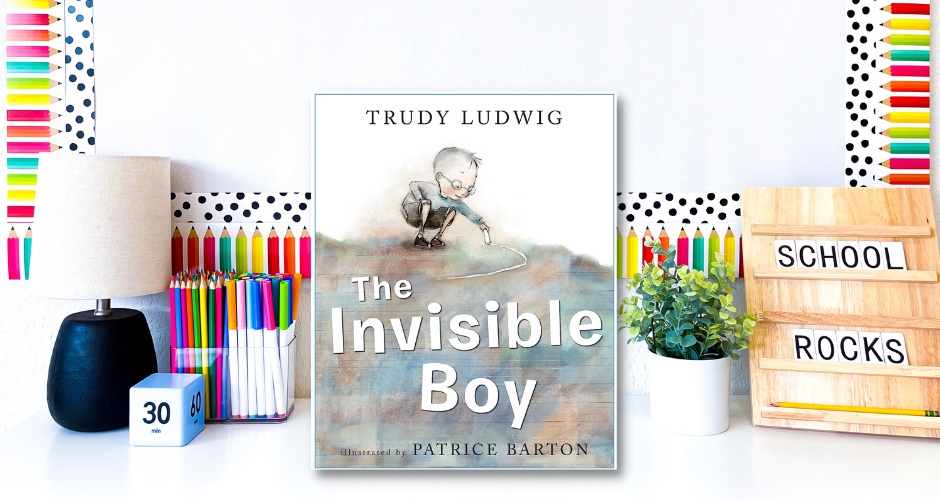
“The Invisible Boy” by Trudy Ludwig (Amazon affiliate link) is an incredible story for teaching bullying prevention to children. This is one of those books that sticks with you, and students (and adults!) remember for years to come.
It tells the story of a little boy named Brian, who feels like he is invisible and unnoticed by the other kids. In the classroom, the teacher is busy with other, more boisterous students. At recess, the kids play without him. And in the cafeteria, he hears about special birthday parties that he wasn’t invited to.
Until one day, when a new student named Justin joins their class. Justin quickly becomes the target of mean words and giggles, and Brian decides to cheer him up by writing a kind note to his new friend. Brian’s act of kindness means a lot to Justin, who then starts to include Brian in his group work in the classroom and at the table at lunch. For once in his life, Brian finally feels seen, valued, and loved. Just like in “One” and “The Recess Queen,” it only took one special and brave soul to completely change another child’s world for the better.
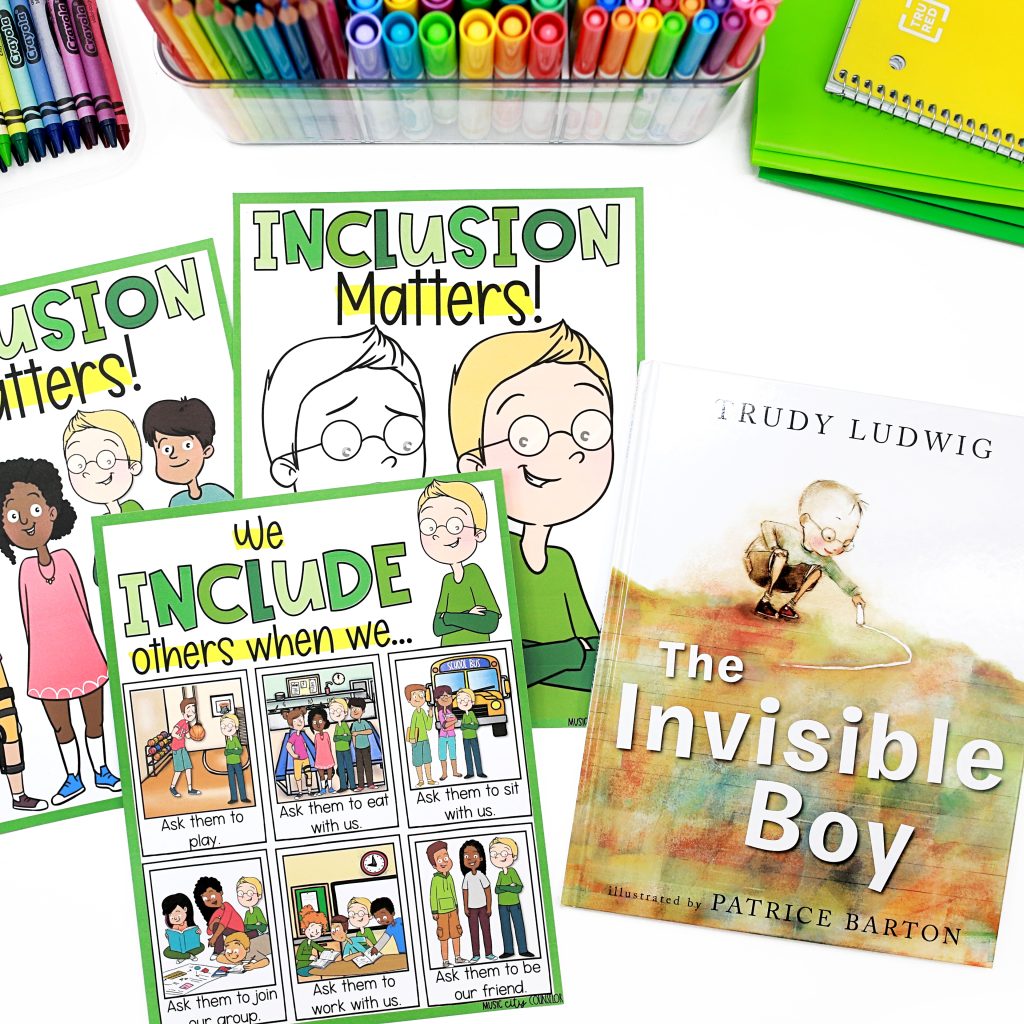
In myastudents learn all about the power of kindness and inclusion. They learn that small things like asking someone to play, inviting someone to sit with them at lunch, or asking someone to join their group can have a huge, lasting impact. Through an interactive presentation, discussion cards, worksheets, coloring pages, and more, students learn how to make others feel like they belong.
“Bully B.E.A.N.S” by Julia Cook
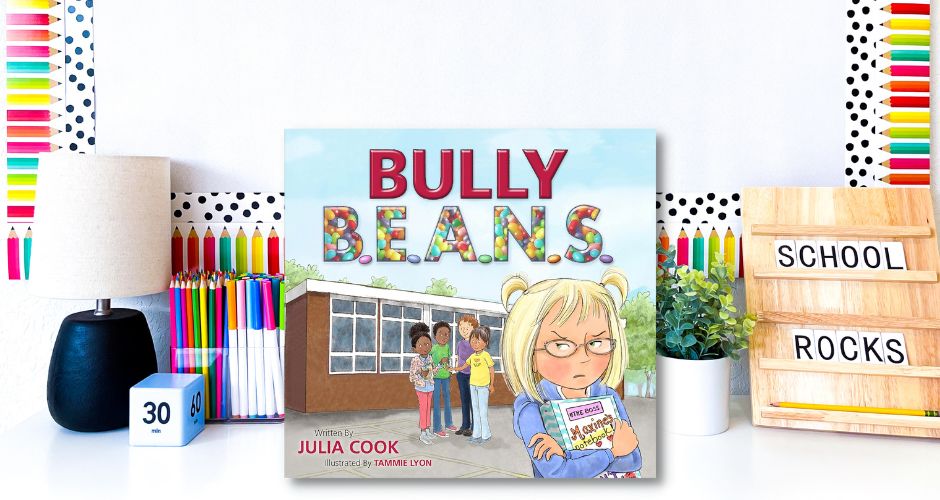
“Bully B.E.A.N.S” (Amazon Affiliate Link) is one of my absolute favorite Julia Cook books. It tells the story of Bobette who bullied others with her “mean eyes” and bossy behavior. She especially targeted a boy named Winston, forcing him to do her homework and give her his lunch money. Bobette’s classmates knew that her choices were wrong, but felt too afraid to stand up to her.
One day, the narrator goes to Bobette’s house after school. She quickly realizes that Bobette’s brother is bullying her and treating her terribly! This unique perspective let’s readers develop empathy, sympathy, and compassion for Bobette, and understand the “why” behind her behavior. They realize that Bobette is a kid just like they are with feelings that matter.
After the play date, the narrator goes home and tells her mom all about Bobette. That’s when her mom grabs a jar of jelly beans called Bully B.E.A.N.S. These special beans stand for: “Bullies Everywhere Are Now Stopped!” and give students the courage to stand up to bullying. Mom also taught the narrator practical strategies to stop Bobette’s bullying behaviors, and emphasized the need to take away the bully’s power. With these strategies in mind, and the bravery of the Bully B.E.A.N.S, the narrator and her classmates felt empowered to stand up to bullying.
Please check out my companion lesson to this story for engaging activities to go along with the book! My favorite is the chance for students to write bullying prevention affirmations on beans!
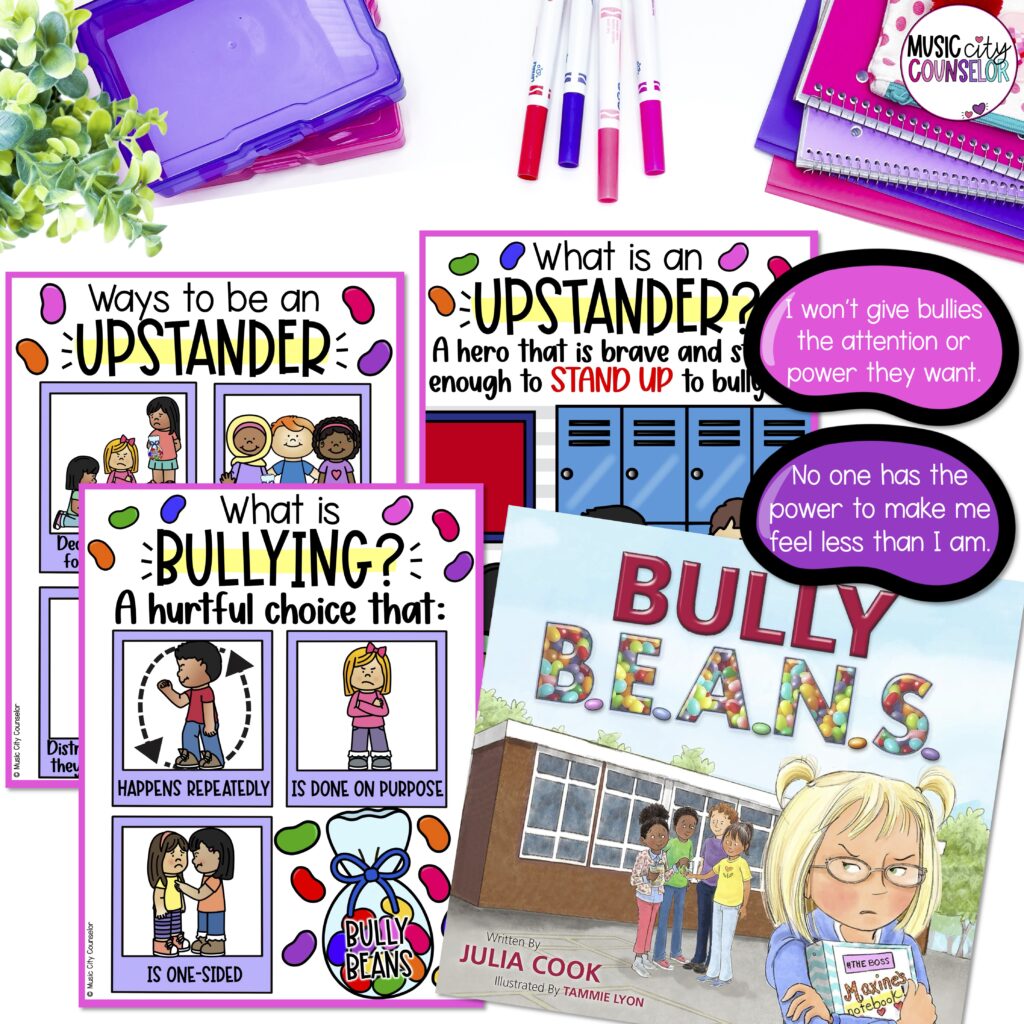
“The Juice Box Bully” by Bob Sornson and Maria Dismondy
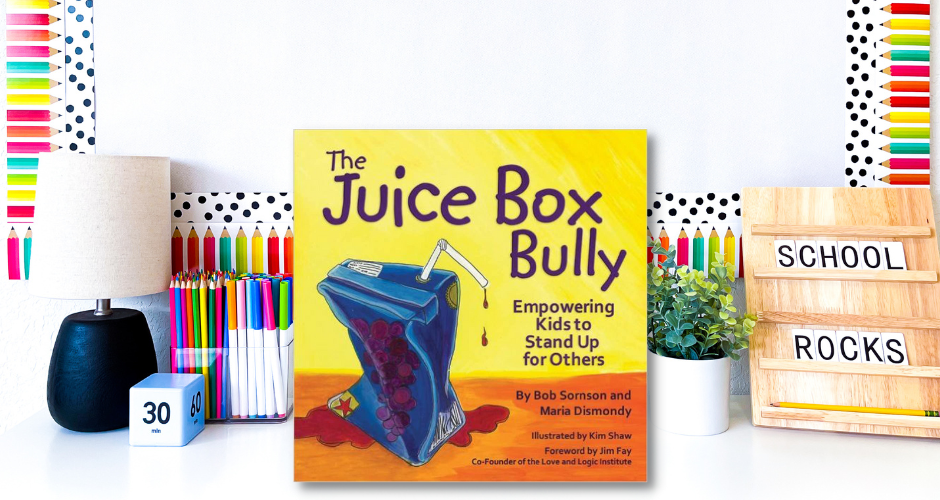
a (Amazon Affiliate Link) tells the story of Pete, a new student to class. Pete’s classmates quickly catch on to Pete’s unkind behavior. He calls classmates names, picks on them, pokes them, and ruins their recess games. At first, Pete’s classmates were unsure what to do. But then, they huddled together and remembered “The Promise” they made as a class. They promised to take care of themselves, each other, and their classroom. They also promised to speak up when someone makes hurtful choices.
Well, Pete didn’t care much for “The Promise.” He continued his bullying behaviors, and earned himself the title of “The Juice Box Bully” when he purposely squirted juice all over Ruby’s shirt at lunch. Ruby was so angry that she wanted all of her classmates to turn against Pete. But, her peers reminded her of “The Promise” and how it applies to all students – even Pete.
Pete couldn’t believe that, despite his choices, his classmates stood up for him and believed that he deserved kindness, too. Pete opened up and shared that at his old school, he had been the victim of bullying. This let’s the reader (and Pete’s classmates) develop compassion and understanding for his behavior.
With this newfound friendship and compassion, Pete had a change of heart. He apologized to Ruby, and to his classmates’ delight, decided to adopt “The Promise,” too.
I hope that this post inspired you to use stories to “open the door” to meaningful learning and discussion on bullying prevention with your students. By sparking conversation with powerful story books and teaching students how to identify and cope with bullying, we can work together to create a healthier, happier, and safer generation of students.
Have you used any of these story books to teach bullying prevention, or do you have others in your toolbox that you love to use? Please comment below, I’d love to hear from you!
You may be interested in:

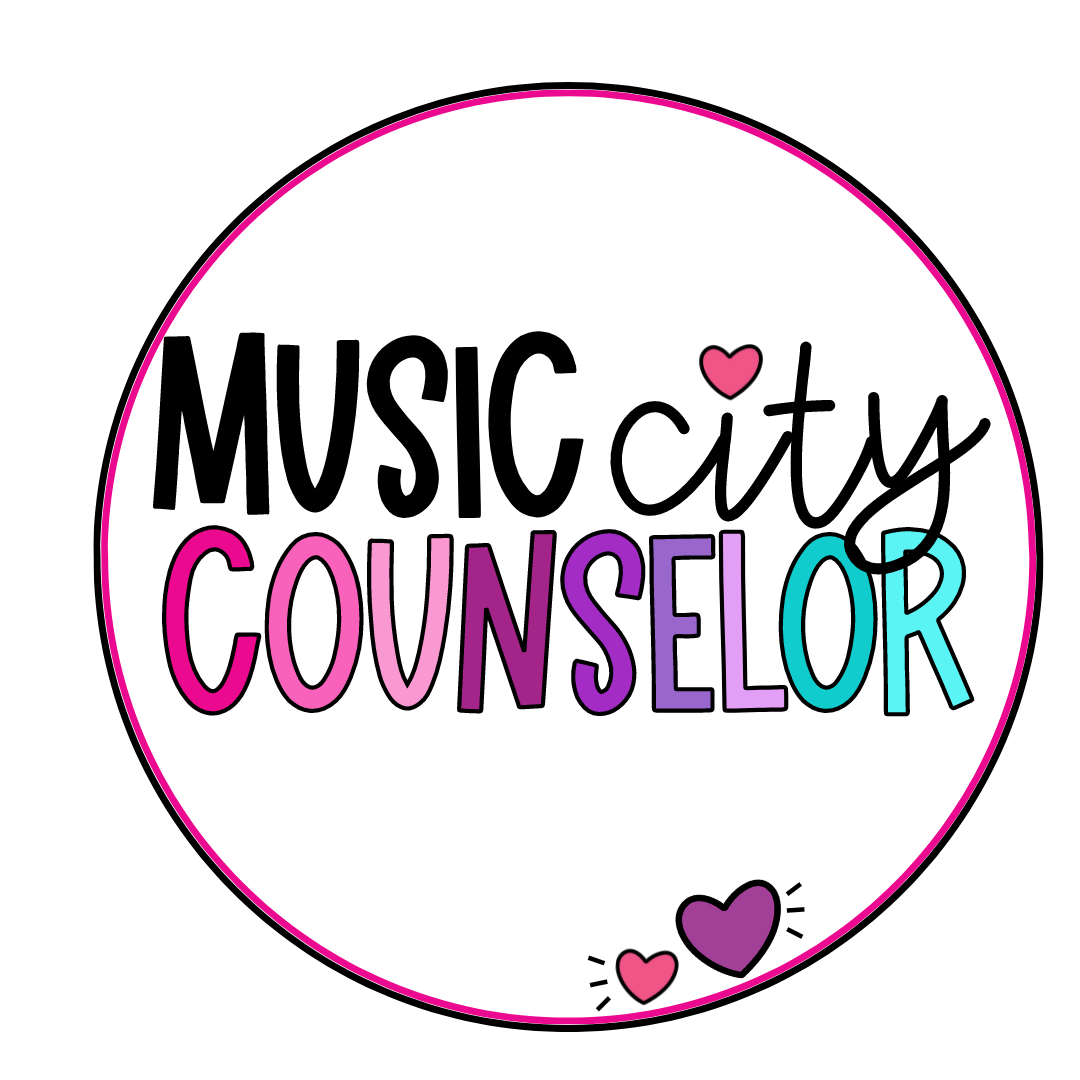

Leave a Reply